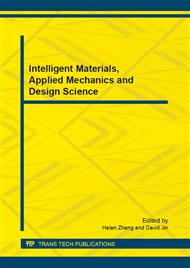p.20
p.24
p.28
p.32
p.37
p.42
p.46
p.50
p.54
Effect of the Nitrogen Nutrient on Pigments of Flower Stalk in Chinese Kale
Abstract:
Effect of nitrogen level (50, 100, 200, 300, 400 mg/L) on pigment accumulation of flower stalk in Chinese kale (Brassica alboglabra Bailley) (cv. Zhonghua) were studied by hydroponics. The results showed that chlorophyll concentration of flower stalk in 50 mg/L and 100 mg/L N treatments were higher before stage Ⅲ, those in 50 mg/L were the highest, while those in 200 mg/L N treatment were the highest at stage Ⅳ and Ⅴ. Carotenoid concentrations in 50mg/L N treatment were the highest during flower stalk development (except at stageⅤ), while those in 100mg/L N treatment were the highest at stagesⅤ.The concentrations of flavonoids and anthocyanin in flower stalk epidermis were the highest in 100 mg/L N treatment, those in 50mg/L N treatment were higher than other treatments. The ratio of anthocyanin/chlorophyll in flower stalk epidermis also were the highest in 100 mg/L N treatment, and higher in 50mg/L N treatment, thus the epidermis appeared mauve in 50 and 100mg/L N treatments.
Info:
Periodical:
Pages:
37-41
Citation:
Online since:
November 2011
Price:
Сopyright:
© 2012 Trans Tech Publications Ltd. All Rights Reserved
Share:
Citation:


